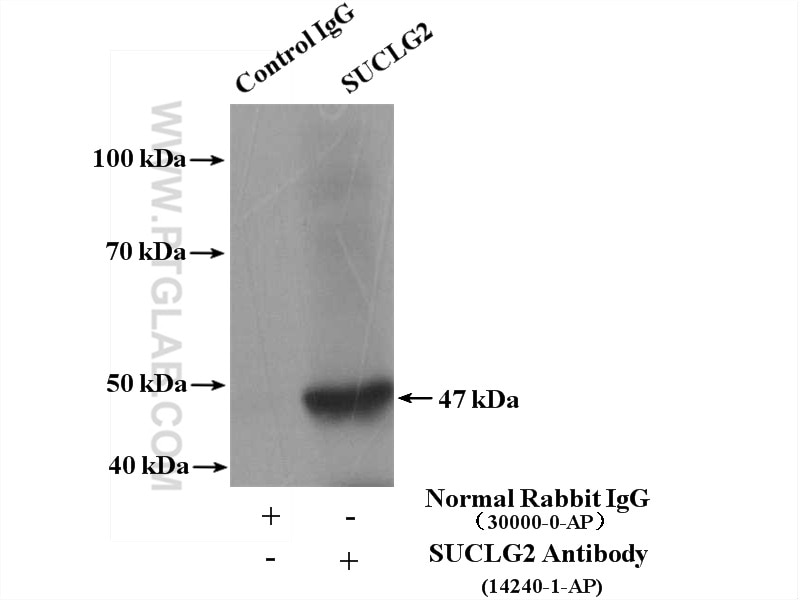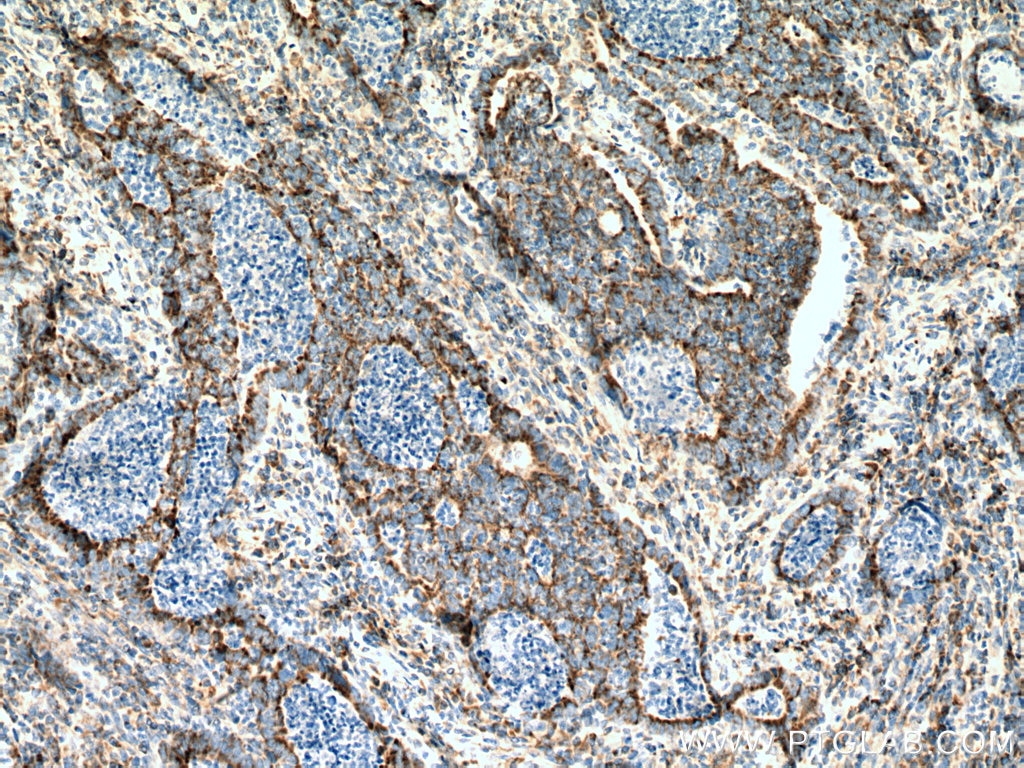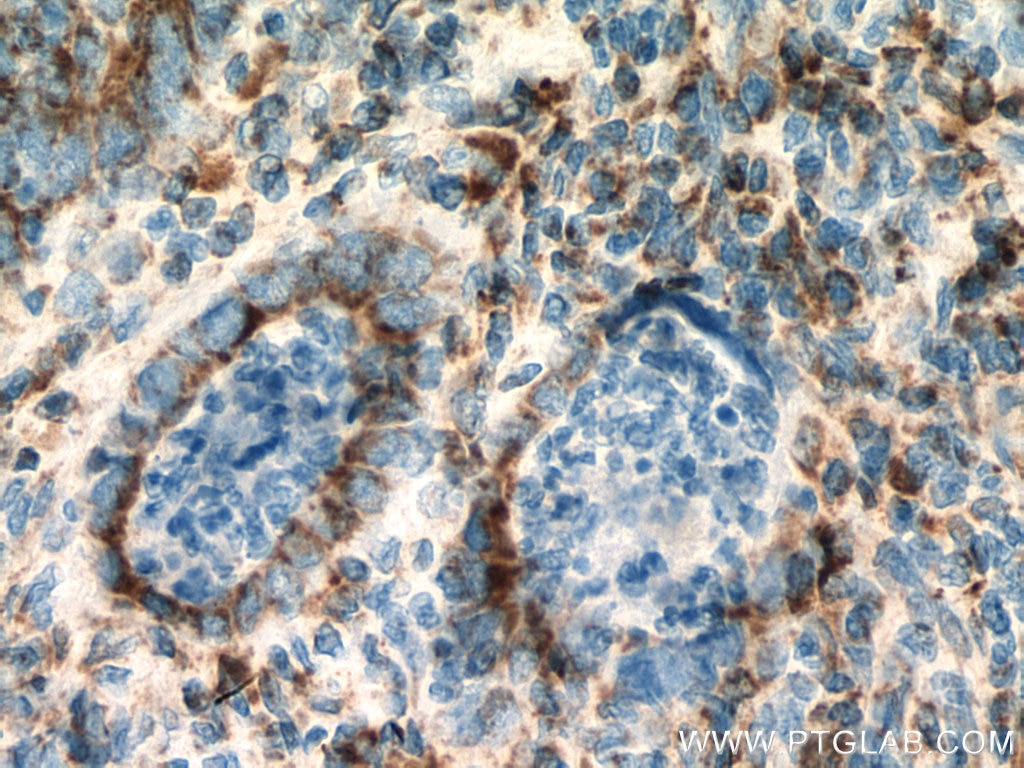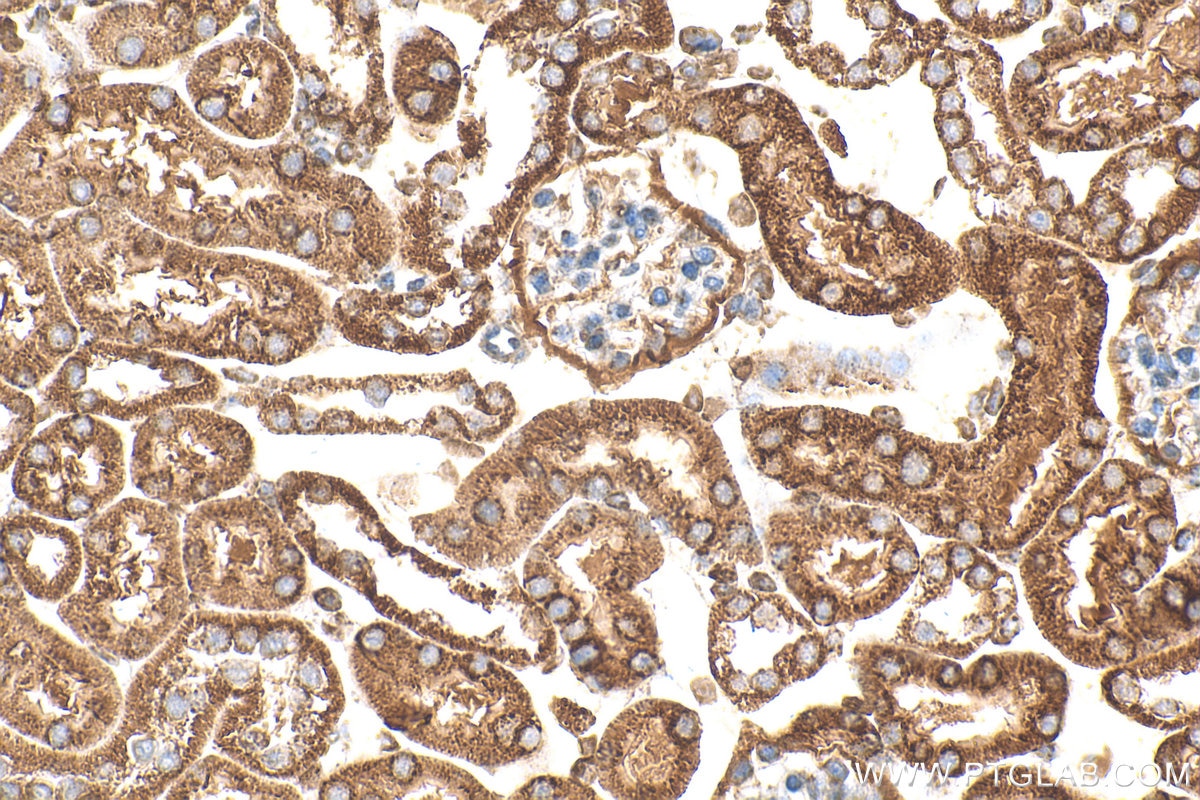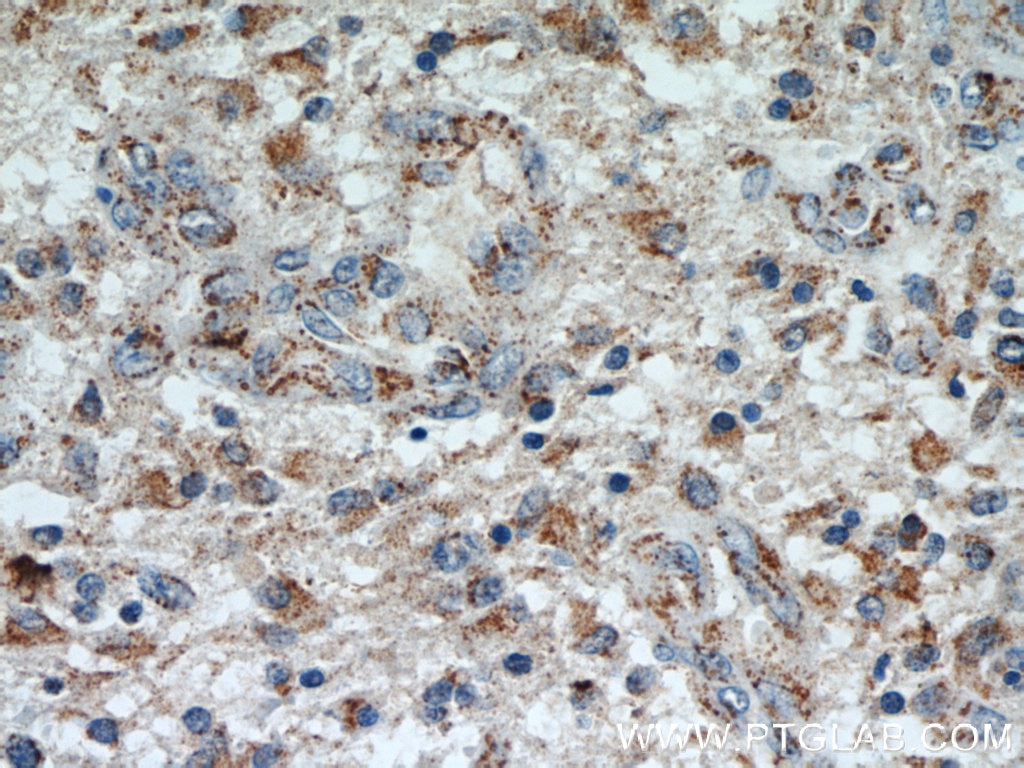Validation Data Gallery
Tested Applications
| Positive WB detected in | COLO 320 cells, HepG2 cells, mouse liver tissue, rat liver tissue |
| Positive IP detected in | mouse kidney tissue |
| Positive IHC detected in | human colon cancer tissue, human gliomas tissue, mouse kidney tissue Note: suggested antigen retrieval with TE buffer pH 9.0; (*) Alternatively, antigen retrieval may be performed with citrate buffer pH 6.0 |
Recommended dilution
| Application | Dilution |
|---|---|
| Western Blot (WB) | WB : 1:5000-1:50000 |
| Immunoprecipitation (IP) | IP : 0.5-4.0 ug for 1.0-3.0 mg of total protein lysate |
| Immunohistochemistry (IHC) | IHC : 1:250-1:1000 |
| It is recommended that this reagent should be titrated in each testing system to obtain optimal results. | |
| Sample-dependent, Check data in validation data gallery. | |
Published Applications
| KD/KO | See 1 publications below |
| WB | See 4 publications below |
| IHC | See 2 publications below |
| IF | See 1 publications below |
| IP | See 1 publications below |
Product Information
14240-1-AP targets SUCLG2 in WB, IHC, IF, IP, ELISA applications and shows reactivity with human, mouse, rat samples.
| Tested Reactivity | human, mouse, rat |
| Cited Reactivity | human, rat |
| Host / Isotype | Rabbit / IgG |
| Class | Polyclonal |
| Type | Antibody |
| Immunogen |
CatNo: Ag5495 Product name: Recombinant human SUCLG2 protein Source: e coli.-derived, PET28a Tag: 6*His Domain: 1-385 aa of BC047024 Sequence: MSDNGVRVQRFFVADTANEALEAAKRLNAKEIVLKAQILAGGRGKGVFNSGLKGGVHLTKDPNVVGQLAKQMIGYNLATKQTPKEGVKVNKVMVAEALDISRETYLAILMDRSCNGPVLVGSPQGGVDIEEVAASNPELIFKEQIDIFEGIKDSQAQRMAENLGFVGPLKSQAADQITKLYNLFLKIDATQVEVNPFGETPEGQVVCFDAKINFDDNAEFRQKDIFAMDDKSENEPIENEAAKYDLKYIGLDGNIACFVNGAGLAMATCDIIFLNGGKPANFLDLGGGVKEAQVYQAFKLLTADPKVEAILVNIFGGIVNCAIIANGITKACRELELKVPLVVRLEGTNVQEAQKILNNSGLPITSAIDLEDAAKKAVASVAKK 相同性解析による交差性が予測される生物種 |
| Full Name | succinate-CoA ligase, GDP-forming, beta subunit |
| Calculated molecular weight | 47 kDa |
| Observed molecular weight | 47 kDa |
| GenBank accession number | BC047024 |
| Gene Symbol | SUCLG2 |
| Gene ID (NCBI) | 8801 |
| RRID | AB_2197187 |
| Conjugate | Unconjugated |
| Form | |
| Form | Liquid |
| Purification Method | Antigen affinity purification |
| UNIPROT ID | Q96I99 |
| Storage Buffer | PBS with 0.02% sodium azide and 50% glycerol{{ptg:BufferTemp}}7.3 |
| Storage Conditions | Store at -20°C. Stable for one year after shipment. Aliquoting is unnecessary for -20oC storage. |
Background Information
SUCLG2, encodes a GTP-specific beta subunit of succinyl-CoA synthetase. Succinyl-CoA synthetase catalyzes the reversible reaction involving the formation of succinyl-CoA and succinate. The deficiency of SUCLG2 represents an encephalomyopathic form of mtDNA depletion syndromes (PMID:30470562). Mutated SUCLG1 causes mislocalization of SUCLG2 protein, morphological alterations of mitochondria and an early-onset severe neurometabolic disorder. SUCLG2 is mainly expressed in liver, kidney, heart (PMID: 9765291).
Protocols
| Product Specific Protocols | |
|---|---|
| IHC protocol for SUCLG2 antibody 14240-1-AP | Download protocol |
| IP protocol for SUCLG2 antibody 14240-1-AP | Download protocol |
| WB protocol for SUCLG2 antibody 14240-1-AP | Download protocol |
| Standard Protocols | |
|---|---|
| Click here to view our Standard Protocols |
Publications
| Species | Application | Title |
|---|---|---|
Adv Sci (Weinh) SUCLG2 Regulates Mitochondrial Dysfunction through Succinylation in Lung Adenocarcinoma | ||
Oncogene Pharmacologically targetable vulnerability in prostate cancer carrying RB1-SUCLA2 deletion.
| ||
Arthritis Rheumatol Mitochondrial control of proteasomal Psmb5 drives the differentiation of tissue-resident memory T cells in patients with rheumatoid arthritis | ||
Clin Cancer Res Biomarker identification and risk prediction model development for differentiated thyroid carcinoma lung metastasis based on primary lesion proteomics | ||
Biochim Biophys Acta Mol Basis Dis SIRT5 mediated succinylation of SUCLA2 regulates TCA cycle dysfunction and mitochondrial damage in pancreatic acinar cells in acute pancreatitis |


